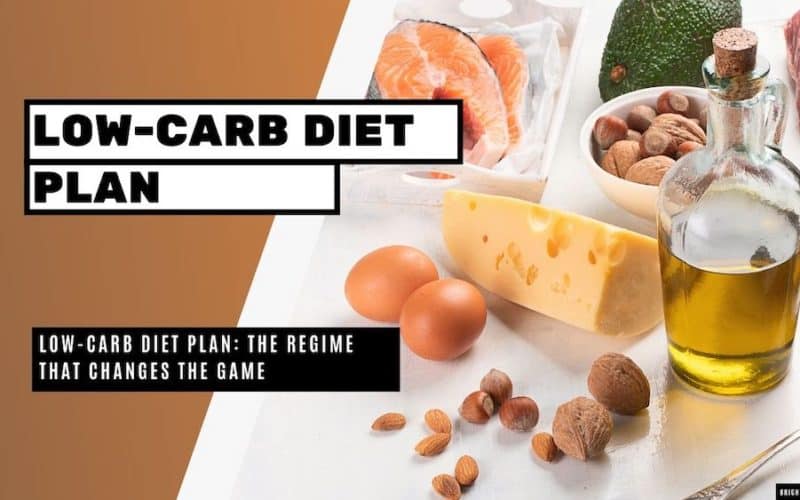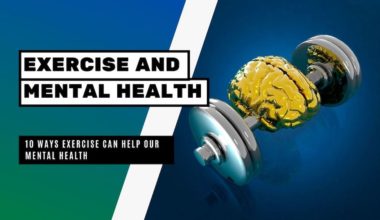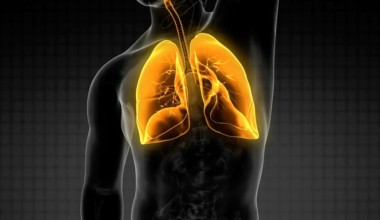If there’s a diet-fact that almost everybody has heard is that a low-carb diet is the best way to lose weight. We all know that today, the diet culture has brought several other regimes to the nourishing game.
But, only a few of them have hit as hard the fitness community as the low-carb diet, also known as keto. Since the apparition of this food routine, the long-life myth of fats being bad for you was once and for all revealed. Now, the focus is on carbohydrates!
Do you want to know how you can lose weight and improve your health, reducing the carbs you consume? Find out NOW with this Low-carb diet definitive guide!
What is Low-Carb?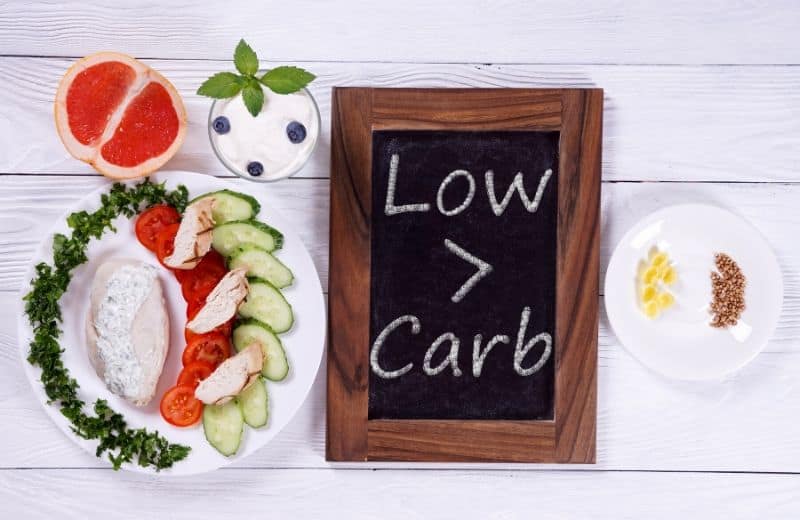
As we’ve mentioned before, and the name implies, a low carb diet consists of reducing the number of carbohydrates you consume. At first thought, it may feel like there’s not much about it: you cut carbs and calories along, so you lose weight.
But the real core of this regime lies in the biological reaction of our body when suppressing its prime source of energy (carbs). While a low-carb diet is sometimes called keto, both are not necessarily inclusive.
Keto will always be a low-carb regime as it actually suppresses carbohydrates completely (1). But you could lead a diet which is low in carbs but still have some.
Ketogenesis, the reason why you lose weight
In the end, the reaction is pretty much the same, but with different aggression rates. The full keto diet is more suitable for fitness people, or at least, not for people with diabetes (2) or high blood pressure levels (3). While less strict regimes that also focus on carbs may be suitable for almost everyone (you should still consult your physician).
The reaction, called ketogenic state, or ketosis, happens when the body finds out it doesn’t have enough carbohydrates to produce energy. To put it into simple words, it’s that moment when your brain figures out that it has to get power from somewhere else, and starts using fat tissue instead. In consequence, you lose fat and weight faster. But, to truly achieve this state to its fullest, you need to go keto.
Difference between keto and Low-carb
The difference between the two relies on proportions. Keto completely suppresses the carbs, and maximizes fats, leaving proteins on a modest level. In a regular or moderate low-carb regime, you reduce carbohydrates to some extent, but still consume some. Also, fat and protein levels are, more or less, balanced.
In the end, a low-carb diet will still make you lose weight using the same principle, but it will be less wearing for your organism and more sustainable for non-fitness dieters (4). On the other hand, you’ll naturally see results slower.
Finally, low-carb and keto are not the only way to go low-carb. Actually, the Atkins diet is the most traditional one, intended to fight diabetes and teach people to eat healthier.
Find the most popular low-carb regimens here.
But, How Many Carbs Do Low-Carb Mean?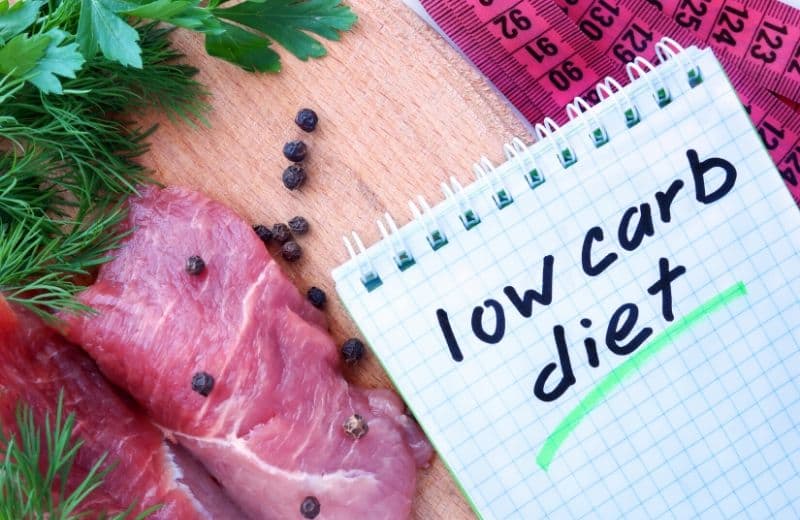
Unlike fats or sugars, there’s not an official rating for what low-carb, on a processed food label, actually means. In this sense, when pretending to start a low-carb regime, the dieter must educate himself to apply the diet correctly.
Low-carb processed food: is it really low-carb?
When you see a low-carb product on the shelf, you think that, whatever number is in that label, is the real amount of carbs you consume. But the truth is that companies don’t count every carbohydrate on food, but only those ones that raise your blood levels quickly (5).
Other carbs that are not as risky for blood, like alcohol, are often not considered in the tag, even so, they still have the same calories. That’s why many keto dieters trusting only on low-carb processed products, never see real results.
In this sense, it may be hard to understand how many carbs you would need to get a low-carb diet because you always feel like you’re eating low, but you don’t lose weight. For avoiding this illusion, the best option is to know the minimum carb intake your body requires to function and work towards it, with whole products, instead of processed.
You may also calculate the deficit between the number in the label and what other carbs it may be lacking, but that sounds exhausting and not very accurate.
How many carbs you should eat, and how to determine your low-carb diet level?
What the Institute of Medicine recommends is that 45% or 60% of your caloric intake must come from carbs (6), but that won’t actually help you lose weight. According to that percentage, the average men consume 200-300grs of carb and women 280-230grs.
For fully accomplishing its functions without relying on other substances, such as body fat, you need at least 130, according to the National Academy of Sciences (7). However, you can live with as little as 50grs. In this sense, low-carb diets can come in three types:
- Moderate: 130-200grs of carbohydrate.
- Low: 50-130grs of carbohydrate.
- Keto or very low: less than 20grs of carbohydrate.
Naturally, If you want to try this way of eating for the first time, we highly recommend you both consult a physician or nutritionist, and start slow.
For the regular high-carb eater, the best option is to begin at 200grs and gradually diminish, making more significant reductions as you get comfortable.
If you go too fast too quickly, your body will decompensate, and you may get sick or faint, among others.
What to Eat on a Low-Carb Diet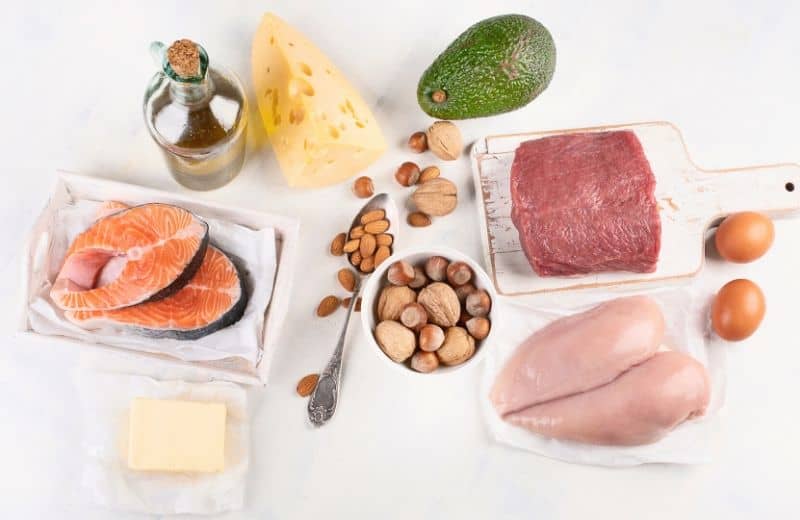
At first, it may be hard to know what to eat because, commonly, we base most of our plates on carbs. Once you start leaving the carbs out, you discover that veggies, fats, and protein have plenty to offer. Actually, many people never want to go back to carbs again.
Find out how to go back on carbs without losing weight after keto, here.
But before getting out of it, you need to get into the low-carb diet. So, you must know what to eat and what to avoid. Pay close attention to the following lists.
The YES of low carb
Food:
- Non-starchy vegetables: These low-carb veggies commonly grow above ground and are more of leafy or fruity. In this sense, we can find cabbage, cauliflower, broccoli, tomatoes, spinach, kale, asparagus, mushroom, zucchini, olives, lettuce, eggplant, etc. All these veggies are allowed, but when going on full keto, it’s recommended to still watch your portions.
- Meat: They all fit in. Red meat, white meat, fish, and seafood, all allowed! And if you’re on a high-fat regime, the better as you may consume even the tastier sins of meat!
- Butter and high-fat sauce: German, hollandaise, Bearnese or plain butter. They all boost your meals taste and go along perfectly with low-carb. On the counter side, you should make them yourself or be quite attentive to the label.
- Nuts: If you’re a snacky one, then nuts are right for you. Use in moderation to substitute high carb snacks.
- Eggs: Just like meat, allowed, in any way you want them!
- Berries: They’re suitable for not-so-strict, or moderate low-carb diets. Just like nuts, these are ideal for snacks.
- Dairy: While we always recommend moderating dairy products, this can’t be the low-carb diet definitive guide if we don’t mention them. These fatty products, even high-fat milk, are one of the best allies in keto or low-carb, as they help satiate your hunger faster and for longer (8). Just be aware of treated milk that may have tons of natural or added sugars.
Drinks:
- Coffee: With no added sugar and no o little milk or cream, is the best ally to suppress hunger. But that’s not it, if you “bulletproof” your coffee, it can also help you feel satisfied even without actually eating. You can read more here.
- Tea: The same as with the black coffee.
- Water: Well, this one is quite self-explanatory, right?
The NOs of low carb
Foods
- Starch: Everything that usually has gluten, even if it’s the “gluten-free” version, is probably NOT low-car friendly. Among these you find:
-
- Bread of all kinds, except for the low carb (when thoroughly checked)
- Potato and sweet potato in all their versions.
- Whole grains (these are the less bad carbs, but still in).
- Pasta
- Crackers and cookies of all kinds.
- Corn products, and grains in general.
- Muesli or granola.
- Sugar: Avoid them all. If you’re on a keto diet, you may evade some fruits like bananas (for us, fruits are always guilt-free, but that’s what the keto culture says). Artificial sweeteners should go too.
- Fruit: Once again, we don’t believe in telling anyone to avoid fruit. If going for a zero-carbs diet, then you should consider consuming only as a treat.
Drinks
- Beers: Did you know beer is made from the exact same ingredients as bread? The only difference is that you eat the bread while you drink the beer. So it’s NO.
Also, remember to never believe in the “Low-carb” version of regularly high-carb products. Remember how we mentioned there wasn’t an official regulation for carb measures? Well, that low carb just means fewer carbs the usual. But that doesn’t ever equal having low carbohydrate content.
Find out how companies trick us into believing in low carb products, here.
Low-Carb Tips and Guides
So, at this point, you know a lot about how to lead a low-carb diet. But, as in any craft, to master this regime, some tips and guides may come really handy and be a key factor of the low-carb diet definitive guide.
1. Mix with intermittent fasting
While it may be too extreme to follow both diets strictly, they may complement each other well. Low-carb diet tends to reduce hunger (9), so you may skip one of your meals, no problem at all, and the fat you’re eating can still keep you active.
Fasting in the mornings and then eating high-fat products may sound weird, but it’s actually the best way to maximize your weight loss effect.
2. No-carbs breakfast
Avoiding carbs seems to be more bearable at breakfast. Just scramble a couple of eggs on butter, add some bacon, and a strand of cheese. Top it with a cup of black coffee, and you more than ready for the day!
3. Reminders
Sometimes, when it’s time to cook, and you have no clue on what to eat, it may be easy to forget some high-carb meals. In that sense, having a reminder or cheat-sheet on what foods are allowed may give you a quick solution before you fall into the bread temptation.
Here you can find a downloadable and comprehensive cheat sheet for keeping those carbs at bay!
4. Full meals in every meal
When not consuming carbohydrates, you can become your every meal a full meal; just add that stake and lots of veggies breakfast, lunch, and dinner! This is the ideal way to go for those carnivores that love big meals.
5. Replace
Almost any carb out there may be replaced for a non-carb version. This applies to mash, rice, pasta, fries, etc. Some of the most popular are:
- – Zucchini or squash noodles
- – Broccoli mash
- – Cauliflower rice
- – Butter fried asparagus or broccoli stems
- – Eggplant lasagna
And just like those, you can find many other great replacements recommended by the Atkins foundation, here.
6. The restaurant hack
Luckily for low-carb dieters, restaurants often provide more than one selection of sides. Instead of the potato mash, add a salad and sorted vegetables. For high-fat, ask for extra olive or extra butter and spread away!
Find the full guide on low-carb restaurant hacking, here!
7. Snacks
If you’re worried about cravings, you should remember the couple of times we already said that when on a low-carb diet, you won’t feel as hungry as you used to. Even so, here you can find a cool guide on keto-friendly snacks!
8. Mindfully add more fat to your diet
If under a strict keto regime, fat is your new prime source of energy. In that sense, and as you’re not consuming carbs, your fat intake must increase or your body will recent.
For many people, it may seem hard, and if they can’t rely on those fries, burger bun, and Spaghetti Alfredo, they just don’t know what to do.
9. Meal-prepping
Later in this low-carb diet definitive guide, we’ll talk about meal planning, but for that to work, a useful tip is to meal prep ahead. By prepping, you may save a lot of money, but most importantly, you won’t give your mood the chance to trick you into cheating!
10. Give cycling a chance!
If you’re not on zero-carbs or keto diet, cycles may prove helpful for you. These consist of alternating periods of ultra-low and moderate carbohydrate consumption, which prevents the body from entering a fat-loss plateau.
Find the ultimate guide for carb cycling here!
11. Exercise
You may lose weight by only dieting. But if you’re a bit smart, you’ll know that a moderate workout can maximize your progress (10). Be smart, choose a combination of cardio and weight training, and get ready to see the results!
Find the best training plan for a low-carb diet here.
Health Benefits of a Low-Carb Diet
Several clinical markers show improvement when the low-carb diet kicks in (11). But the Triglycerides count is, perhaps, the most noticeable. Out of the percentage thrown by a blood test, the significance of the drop in triglycerides count is related to heart diseases.
Triglycerides are fat molecules circulating in the bloodstream. A low-carb diet means your liver has less of the substance that it transforms into fatty acids, which then are turned into energy.
Therefore, a well-formulated low-carb diet provides you with sufficient energy but reduces drastically the risk of a heart disease caused by the excess of fat in your blood (high triglycerides).
In diabetes patients, a low-carb diet can reduce the dosage of insulin. When the consumption of carbs drops, the glucose level follows.
If you have diabetes and are afraid about starting a low-carb diet, it’s ok. That means you’re worried about your health. But you can still try this game-changer alimentary regime as long as you keep in touch with your physician.
Not convinced yet? Click here for ten scientifically-proven benefits of low-carb.
Potential Side-Effects of a Low-Carb Diet?
Because of the drop in glucose levels that comes from a low-carb diet, hypoglycemia is quite a rare potential side effect (12). Hypoglycemia is the last stage of the glucose level reduction and must be treated immediately.
Although it is a possibility that must be taken into consideration, probabilities are that you just get to feel a little tired at the beginning of the regime.
Your liver is a key player in your body, it transforms carbs into fatty acids, glucose, and blood plasma proteins, and then add them to your blood.
When carbs consumption drops, blood gets lighter because there are fewer of those components in it. A low-carb diet shouldn’t be a long term food regime at the risk that low blood pressure becomes a permanent condition that increases the chances of heart disease.
Find more dangerous potential side-effects of a low-carb diet here.
Low-Carb Meal Plan Menu for a Week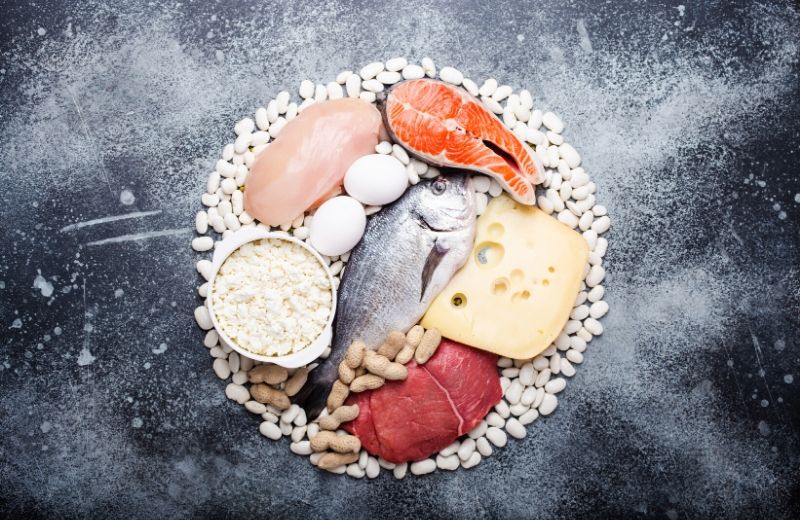
So, planning your meals is essential because, as the game has changed and now fats are allowed, we may commonly mistake eating more fats with eating the worst fats. And the result of not eating healthy will be disastrous, whether on a low carb diet or not.
We know starting may be difficult, so for you to get used to it and have some ideas, we bring a whole week plan menu for giving you the push start!
Monday
- Breakfast: 2 scrambled eggs with half red bell pepper fried in coconut oil and chopped.
- Lunch: Grass-fed yogurt with 5 strawberries and half a cup of almonds.
- Dinner: Half chicken breast pulled and mixed with veggies
Tuesday
- Breakfast: Bacon and eggs.
- Lunch: Oven salmon fillet topped with olive oil and garlic, and boiled carrot sticks.
- Dinner: Smoothie with coconut milk, heavy cream, and berries.
Wednesday
- Breakfast: Omelet with various veggies.
- Lunch: Meatballs and mushrooms with olive oil.
- Dinner: Avocado cream with celery and carrot sticks.
Thursday
- Breakfast: Bacon and eggs.
- Lunch: Shrimp salad with some olive oil.
- Dinner: Steak and broccoli.
Friday
- Breakfast: Omelet with butter-fried red bell pepper and gruyere cheese.
- Lunch: Grass-fed yogurt with almonds and blueberries.
- Dinner: Pork chops with avocado.
Saturday
- Breakfast: Bacon and eggs.
- Lunch: chicken salad with some olive oil.
- Dinner: Steak and cauliflower.
Sunday
- Breakfast: Scrambled eggs, carrot stick, and gruyere cheese.
- Lunch: Grass-fed yogurt with strawberries.
- Dinner: Medium-size burgers served with salsa sauce and broccoli.
And with that meal plan, we’ve already reached the end of this Low-carb diet definitive guide. Make sure you follow it through and come share your results!
Reasons for Not Losing Weight on Low Carb Diet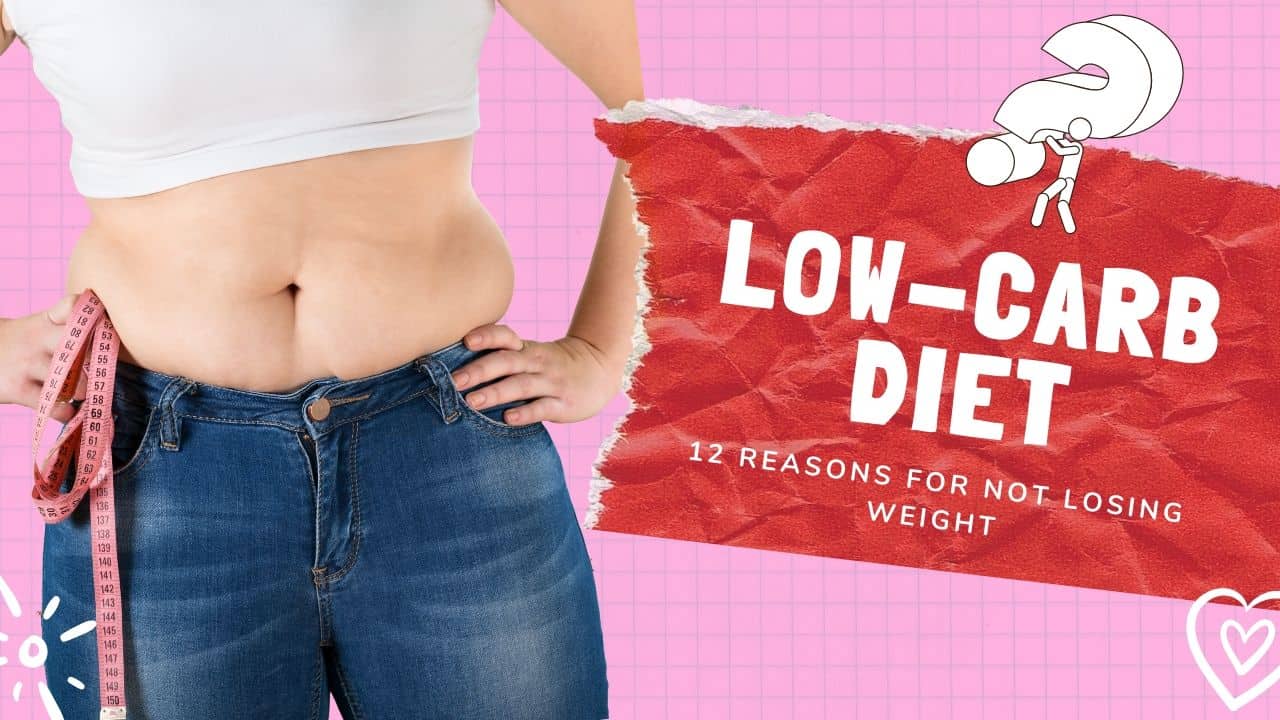
It is often quite difficult to give up eating our favorite foods and go on a low carb diet to lose weight. But what can be quite disheartening is not losing weight despite following this diet. There can be many reasons for this and some of them are described below. Read on the top 15 reasons you are not losing weight on a low carb diet!
1. You are stressed often
Stress not only affects physical and mental health but also your weight. Constant stress increases levels of the hormone cortisol which tends to increase hunger and cravings for junk food.
2. You’re consuming too many calories
Another reason for not losing weight on a low-carb diet could be the consumption of excess calories. Studies have shown that people tend to underestimate their calorie intake by a significant amount. You can try and start tracking your calories by using a calorie calculator or a calorie counting app.
3. You aren’t lowering your carbs intake enough
People react differently to low-carb diets. So, a certain low carb consumption could be effective for one person and not the other.
If you feel that your weight is stagnant despite being on a low carb diet, then try lowering your carbs intake even further. You can go for less than 50 grams per day in which case you’ll also have to stop eating most fruits.
4. You’re binge-eating
One of the reasons for not losing weight on a low-carb diet is binge eating, which is when you eat an excessive amount of food in a short span of time. Binge eating can be done on junk food as well as healthy food such as nuts, and cheese.
Healthy foods also contain calories and if consumed in excess can cause a hindrance in losing weight. A single episode of binge eating can ruin your efforts of reduced-calorie consumption from a low carb diet.
5. You’re not getting enough sleep
Sleep is essential for the functioning of our bodies and for body weight regulation. This is why sleep deprivation could be one of the reasons you are not losing weight on a low-carb diet.
According to many studies, poor sleep increases the risk of obesity by 55% in adults and 89% in children. Moreover, not having enough sleep can make you feel more tired and make you skip exercise.
6. You may have a medical condition
Many times, despite maintaining a low carb diet and exercising regularly, you still not be losing weight. In many such cases, underlying medical conditions, such as hypothyroidism could be causing this. Moreover, the side effects of certain medications could also include weight gain. They include:
- Antipsychotic medications
- Beta-blockers, which are used to treat high pressure
- Medicines containing steroids
- Antidepressants
7. You’re having too many cheat meals
Having too many cheat meals can be why you are not losing weight on a low carb diet. You can consider having more than 1-2 cheat meals per week as excessive. Having a single cheat meal or a cheat day and ruin some progress of your weight loss journey.
8. You’re drinking too many sugary drinks
Weight loss can also be hindered by the consumption of drinks with high sugar content such as alcohol, carbonated soft drinks, and alcohol. Alcohol itself has around 7 calories per gram which are pretty high. These drinks are high in sugar and calories and offer no nutritional value to our bodies.
9. You consume processed food
If you include low carb bars and foods which are processed in your diets then you will not lose weight. Try consuming real foods such as eggs, nuts, and fish which actually provide nutrition to the body.
10. You are not exercising
Another reason why you are not losing weight on a low-carb diet could be due to lack of exercise. When you diet for weight loss, you not only lose body fat but also lose muscle mass.
To prevent this, try and do some form of resistance training such as lifting weights. This helps maintain muscle mass and prevents metabolic slowdown.
You can also try aerobic exercise or cardio which is a type of exercise that increases your heart rate. It also includes jogging, swimming, and cycling. Cardio is very effective in burning body fat, especially belly fat, and weight loss.
Moreover, you can also simply incorporate physical activity into your everyday routine by taking walking and by climbing the stairs instead of taking the elevator.
11. You don’t eat mindfully
Another mistake people make is not eating mindfully. Mindful eating includes eating without any distractions, such as playing games, chewing slowly and enjoying every bite so that your body registers when it is full.
Mindful eating is a powerful way for weight loss and many studies have shown that it can actually cause weight loss and reduce episodes of binge eating.
12. You are eating too many meals
It is often recommended that people should eat many small meals throughout the day to lose weight. But there are no such studies that have effectively linked meal frequency to weight loss.
Rather eating too many meals could actually be of the reasons why you are not losing weight on a low carb diet. One method you can try for weight loss is intermittent fasting in which you don’t eat for around 15-24 hours after which you get some time to eat.
Another reason why you are not losing weight on a low-carb diet could simply be because you just don’t see it on the weighing scale. When you initially start dieting and exercising, you lose fat, which you actually want to lose, and start building muscle mass. This muscle mass shows up on the scale and deceives you into thinking that your low carb diet isn’t working.
Try assessing your body fat percentage to effectively evaluate the results of your low carb diet. Moreover, you should try and combine a low carb diet with proper exercise to achieve the best weight loss results.

